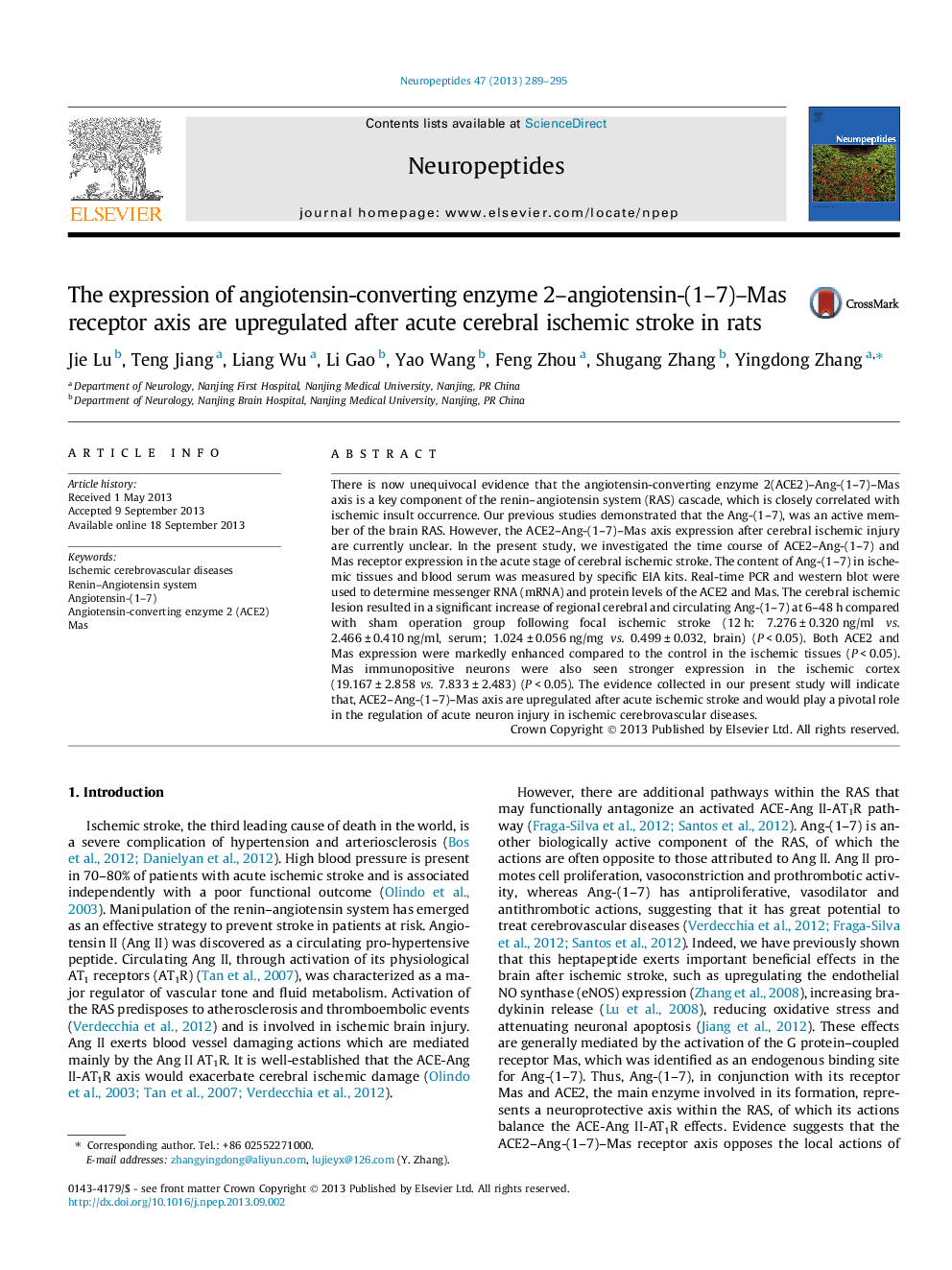| Article ID | Journal | Published Year | Pages | File Type |
|---|---|---|---|---|
| 2808087 | Neuropeptides | 2013 | 7 Pages |
There is now unequivocal evidence that the angiotensin-converting enzyme 2(ACE2)–Ang-(1–7)–Mas axis is a key component of the renin–angiotensin system (RAS) cascade, which is closely correlated with ischemic insult occurrence. Our previous studies demonstrated that the Ang-(1–7), was an active member of the brain RAS. However, the ACE2–Ang-(1–7)–Mas axis expression after cerebral ischemic injury are currently unclear. In the present study, we investigated the time course of ACE2–Ang-(1–7) and Mas receptor expression in the acute stage of cerebral ischemic stroke. The content of Ang-(1–7) in ischemic tissues and blood serum was measured by specific EIA kits. Real-time PCR and western blot were used to determine messenger RNA (mRNA) and protein levels of the ACE2 and Mas. The cerebral ischemic lesion resulted in a significant increase of regional cerebral and circulating Ang-(1–7) at 6–48 h compared with sham operation group following focal ischemic stroke (12 h: 7.276 ± 0.320 ng/ml vs. 2.466 ± 0.410 ng/ml, serum; 1.024 ± 0.056 ng/mg vs. 0.499 ± 0.032, brain) (P < 0.05). Both ACE2 and Mas expression were markedly enhanced compared to the control in the ischemic tissues (P < 0.05). Mas immunopositive neurons were also seen stronger expression in the ischemic cortex (19.167 ± 2.858 vs. 7.833 ± 2.483) (P < 0.05). The evidence collected in our present study will indicate that, ACE2–Ang-(1–7)–Mas axis are upregulated after acute ischemic stroke and would play a pivotal role in the regulation of acute neuron injury in ischemic cerebrovascular diseases.
